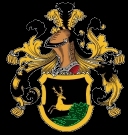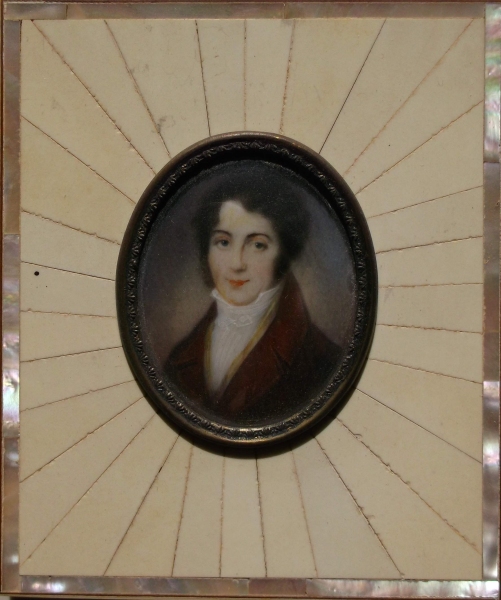

Miniature portraits: Jane Austen’s sentimental favourites


The well known authoress, Jane Austen describes in her Pride and Prejudice a dialogue about miniature portraits. It starts when Elizabeth visits Pemberley with her aunt and uncle, the Gardiners:
“She approached and saw the likeness of Mr. Wickham suspended, amongst several other miniatures, over the mantlepiece. Her aunt asked her, smilingly, how she liked it. The housekeeper came forward, and told them it was the picture of a young gentleman, the son of her late master’s steward, who had been brought up by him at his own expence. “He is now gone into the army,” she added; “but I am afraid he has turned out very wild.”

Mrs. Gardiner looked at her niece with a smile, but Elizabeth could not return it.
“And that,” said Mrs. Reynolds, pointing to another of the miniatures, “is my master — and very like him. It was drawn at the same time as the other — about eight years ago.”
Mrs. Reynolds’s respect for Elizabeth seemed to increase on this intimation of her knowing her master.
“Does that young lady know Mr. Darcy?”
Elizabeth coloured, and said — “A little.”
“And do not you think him a very handsome gentleman, ma’am?”
“Yes, very handsome.”
“I am sure I know none so handsome; but in the gallery up stairs you will see a finer, larger picture of him than this. This room was my late master’s favourite room, and these miniatures are just as they used to be then. He was very fond of them.”
This accounted to Elizabeth for Mr. Wickham’s being among them.”
A crucial passage in that it prompts Elizabeth to ponder her past and present feelings for each of the gentlemen in question. Note that in the world of miniatures (and old Mr. Darcy’s affections) they are equals, but only Darcy’s larger picture makes it to the gallery up stairs, as Mrs. Reynolds is careful to point out…
In Emma, the artistic though half-hearted heroine has of course tried her hand at painting miniature portraits of her family: “Miniatures, half-lengths, whole-lengths, pencil, crayon, and water-colours had been all tried in turn.”
In Sense and Sensibility, Marianne wears round her neck a miniature of her late great uncle, which her younger sister Margaret, clever child, mistakes for a portrait of the rakish Willoughby. Wait, was it a mistake? Children are often more clear-sighted than adults, aren’t they?
Later in the novel, Lucy wishes to torment Elinor by providing tangible proof of her secret engagement to Edward. She takes from her pocket -what else?- a miniature portrait of the gentleman.
“To prevent the possibility of mistake,” says Lucy, “be so good as to look at this face. It does not do him justice to be sure, but yet I think you cannot be deceived as to the person it was drew of. — I have had it above these three years.”
More poignantly, in Persuasion, the miniature portrait of a naval officer, who has recovered a bit too swiftly from the sorrow of his fiancee’s sudden death, prompts the denouement. It allows the heroine, in the novel’s most personal and moving passage, to claim the constancy of her affections for Captain Wentworth.
Austen’s miniatures are tokens of love, and they also signify fickleness and betrayal.
So, while gazing at the miniatures at the exhibition, I caught myself trying to recognize Jane’s family members and fictional characters in the faces of long departed uniformed gentlemen and fine ladies painted on bits of ivory.
For more information on miniatures (and many other artifacts) in Jane’s novels, please see Austen’s Unbecoming Conjunctions, by Jill Heydt-Stevenson.